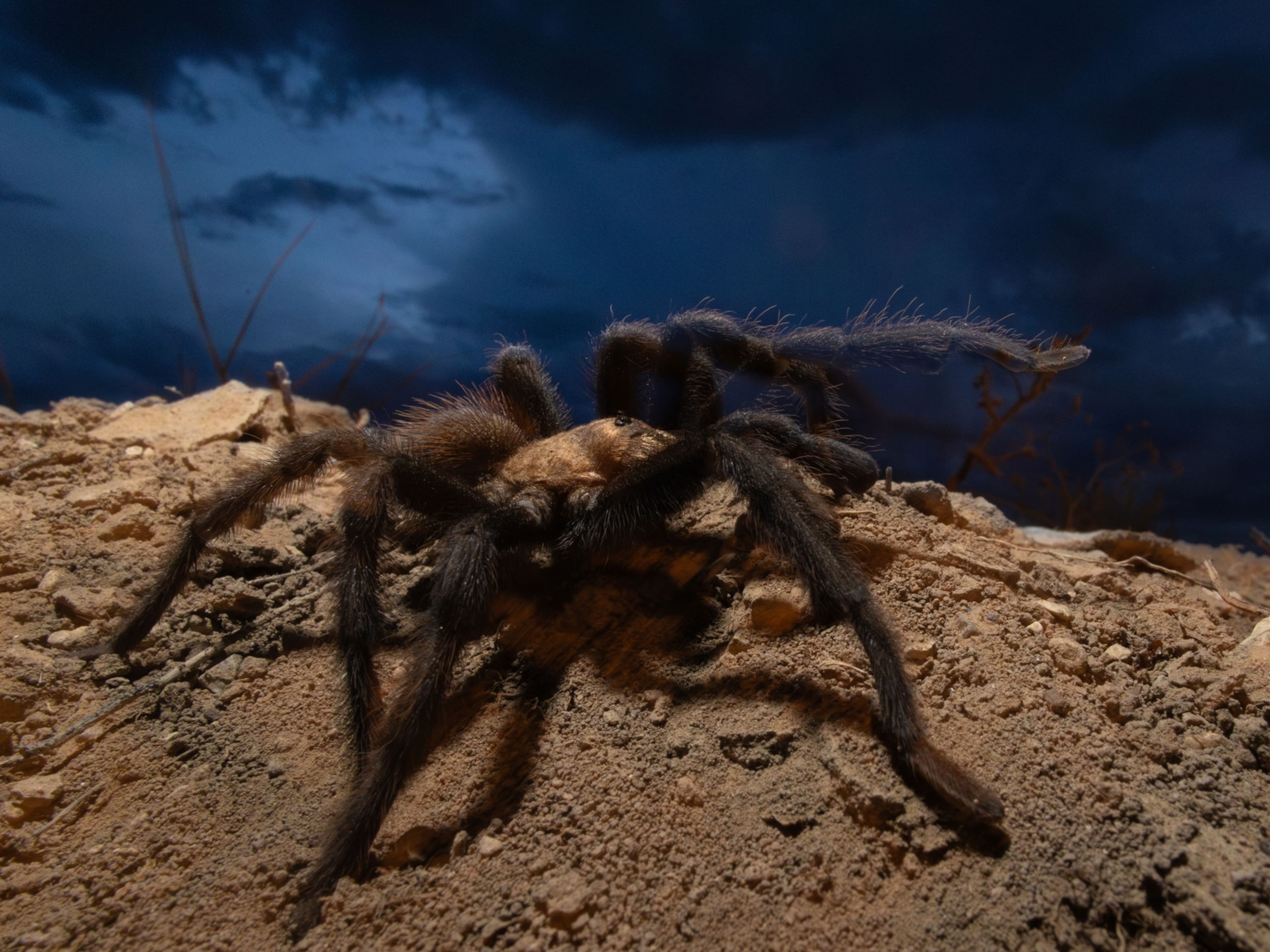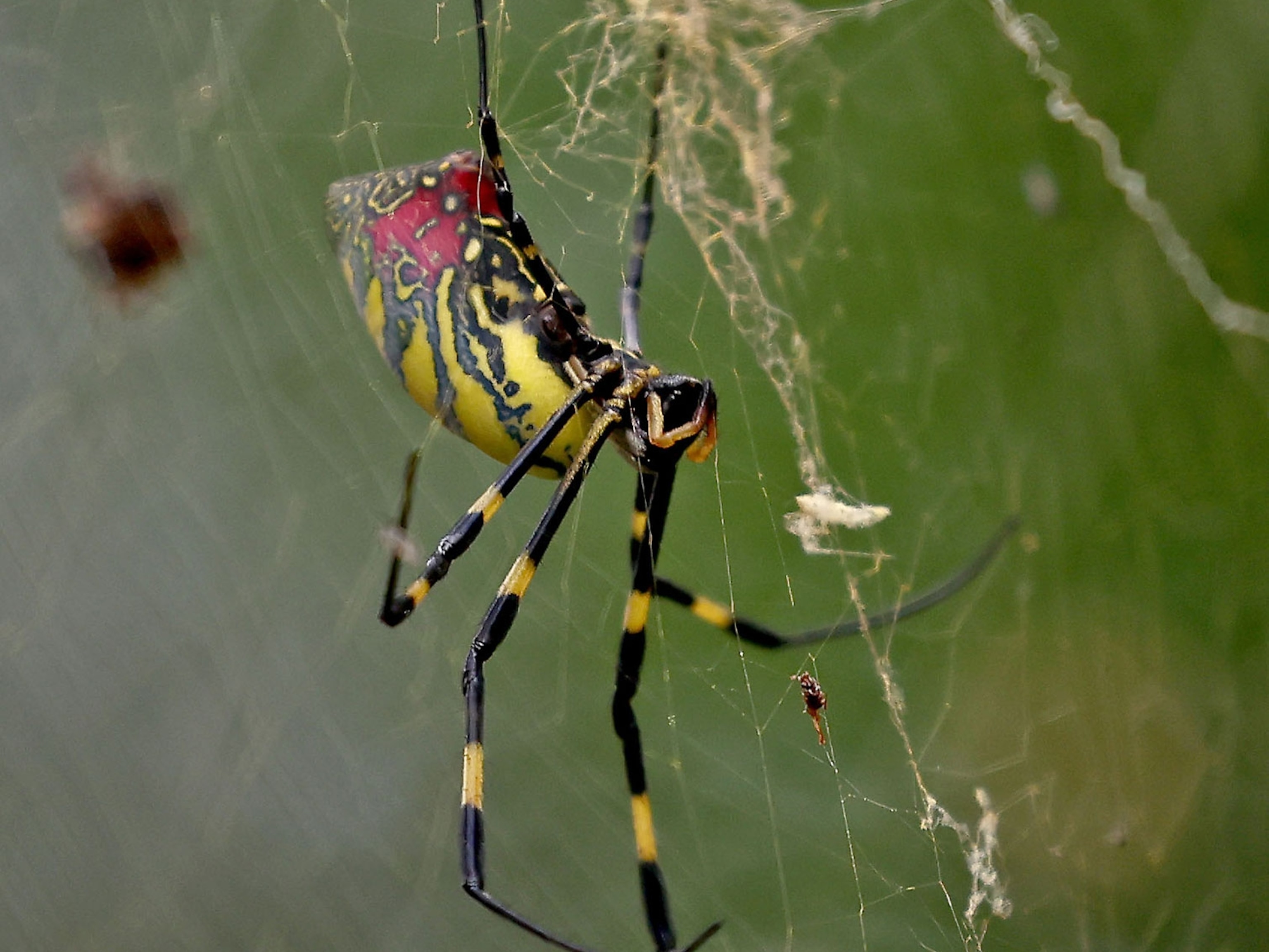Flying Spiders Found—and They Can Steer in Mid-Air
The jungle arachnids can deftly soar from tree to tree, a surprising ability, a new study says.
Who needs a parachute? Some tropical spiders can fly without using silk, making virtuoso dives to nearby tree trunks, scientists have discovered.
The daredevil arachnids seem to steer themselves through the air with movements of their outstretched forelegs, according to a study published August 19 in the Journal of the Royal Society Interface.
It’s an unexpected talent for spiders, which have no history of either flight or wings, scientists say.
“We really did not expect to see gliding behavior in spiders,” says study leader Stephen Yanoviak, a tropical arthropod ecologist at the University of Louisville in Kentucky.
“There are no winged spiders. Spiders don’t fly.” (Also see "Millions of Spiders Rain Down on Australia—Why?")
The behavior may have evolved because tree trunks are a far better place for a tree-dwelling spider than the forest floor, an unfamiliar territory crawling with creatures looking for a meal, he says.
Free Falling
Yanoviak and his colleagues have spent years hunting for insects that can glide with precision. The researchers use a simple test: They drop creatures from a great height.
Their "drop tests" have shown that many ant species can "hang glide," making controlled aerial descents, as do immature praying mantises and grasshoppers. The first spiders the team tried, however, flunked.
The scientists finally auditioned large arachnids known as “flatties,” some of which live in the American tropics. Though flatties can be as big across as a soup can lid, they're not much thicker than a nickel—some even thinner. (Watch a video of the world's largest spider.)
Flatties are also fast, and many are so perfectly camouflaged that it’s almost impossible to see them unless they move.
To capture flatties for the new experiments, Yanoviak and his team climbed trees in the Panamanian jungle, where they climbed trees and popped plastic bags over any spiders that betrayed themselves by scuttling away.
The scientists gathered more flatties in the Peruvian rain forest, where walkways high in the tree canopy made spider collection relatively easy.
Catlike Maneuvers
The team then dusted their research subjects with fluorescent powder to easily identify them and to keep the spiders from clinging to the insides of their receptacles.
Then, in the forests of both countries, the scientists dropped the spiders from a height of 65 to 80 feet (20 to 25 meters) above the ground.
The flatties proved themselves more agile than cats, turning themselves right side up in a matter of milliseconds, pointing their heads downward, and gliding for a tree trunk. (Also see "Cartwheeling Spider Found, Inspires New Robot.")
The best skydivers could swerve to a landing after falling only 13 feet (4 meters) or so.
In the video footage, “you’ll see the spider steering as it goes through the tree,” Yanoviak says. “If it wants to turn left, it changes the angle of the right front leg. And if it wants to turn right, it does the same with the left front leg.”
However, it's uncertain whether the leg movements are actually steering the airborne spiders, Yanoviak cautioned. But their flatness probably helps them glide, he says.
Awesome Aerials
The flatties’ glide also impresses other scientists not involved in the new research.
Sarah Crews, an independent evolutionary biologist who’s an expert on flatties, says she’s “convinced” by the findings, which show spiders are just as capable of gliding as insects—but do the job differently. (Also see “How Do Spiders Walk Upside Down? Mystery Solved.”)
“These results are indeed surprising for a spider,” says Marie Herberstein, a behavioral ecologist at Australia’s Macquarie University and editor of the book Spider Behavior. “Spiders generally rely on dragline silk … as a safety line should they fall,” she says.
Adds study leader Yanoviak, “It’s awesome to see them do it. They’re so good at it.”
Follow Traci Watson on Twitter.





